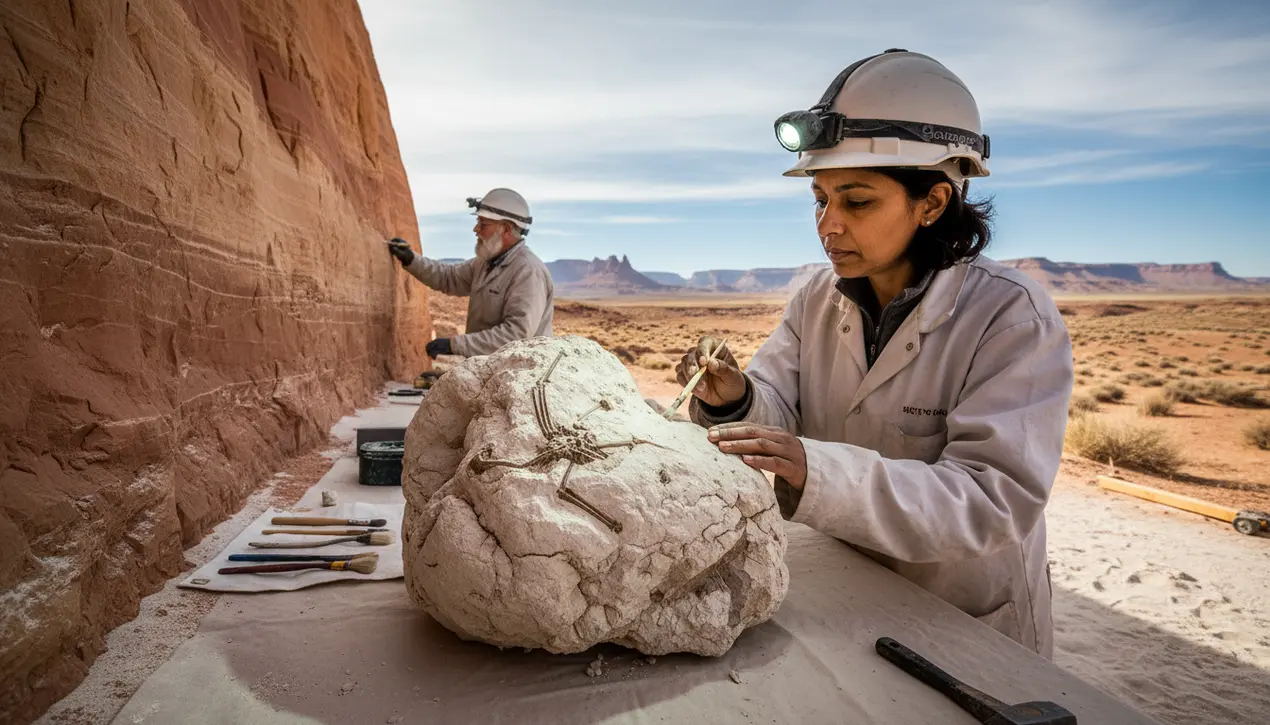
SciencearchaeologyExcavations and Discoveries
Fossilized Dinosaur Vomit Reveals New Pterosaur Species.
KE
Kevin White
6 hours ago7 min read6 comments
In a discovery that fundamentally redefines the concept of a last meal, paleontologists have identified a previously unknown species of pterosaur not from a pristine skeleton, but from the fossilized remains of dinosaur vomit, a 150-million-year-old biological snapshot that offers an unprecedented glimpse into Jurassic predator-prey dynamics. The find, excavated from the Morrison Formation in Utah, centers on a mass of partially digested bones, now recognized as belonging to a small, juvenile pterosaur with a unique bone structure in its wings, distinguishing it from known contemporaries like Pterodactylus and Rhamphorhynchus.This isn't merely a new species; it's a data point from a single moment in the Cretaceous, a fossilized event that tells us not just what this flying reptile was, but what it was to the predator that consumed it. The predator, believed to be a marine reptile akin to an ichthyosaur based on the geological context and the nature of the regurgitalite—the technical term for fossilized vomit—apparently found the pterosaur disagreeable, expelling the bones before they could be fully processed by stomach acids.This act of prehistoric dyspepsia proved to be a boon for science, as the rapid burial preserved the bones in exquisite, articulated detail, providing a more complete anatomical picture than is often gleaned from scattered, isolated fossils. Dr.Anya Sharma, the lead paleontologist on the study published in *Proceedings of the Royal Society B*, explained the significance: 'We are essentially looking at a moment frozen in time. This isn't just a skeleton; it's a fossilized interaction.It tells us about the diet of these marine predators, the vulnerability of young pterosaurs, and it provides a stunningly clear morphological template for a new species, which we've named *Vomitopterus incredibilis*. The implications are profound for understanding the ecosystem's food web.' This discovery pushes the boundaries of paleontological methodology, demonstrating that critical evolutionary data can be found in the most unglamorous of fossil forms. It suggests that regurgitalites, long overlooked in favor of more traditional fossils, could be a rich, untapped resource for identifying smaller, more fragile species whose remains are rarely preserved intact.For the field of biotechnology and future-facing science, this event is a powerful metaphor for the potential of unconventional data sources; just as CRISPR allows us to edit the code of life, this finding shows that decoding ancient ecosystems requires examining every available piece of biological information, even the discarded ones. The narrative of *Vomitopterus* is now permanently intertwined with its demise, a stark reminder that the story of life on Earth is written not only in bone and stone, but in the visceral interactions between predator and prey, preserved through a quirk of fate and geology.
#featured
#paleontology
#fossil
#pterosaur
#discovery
#vomit
#prehistoric
#new species
Stay Informed. Act Smarter.
Get weekly highlights, major headlines, and expert insights — then put your knowledge to work in our live prediction markets.
Related News
Comments
Loading comments...
© 2025 Outpoll Service LTD. All rights reserved.